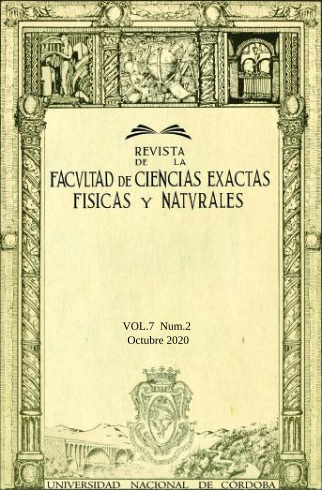Manufacturing and characterization of epoxy granite for use in machine tools
Keywords:
epoxy granite, composite material, reinforcement material, compression, flexionAbstract
Composite materials has been studied for their use in the elaboration of precision machine tool foundations. Epoxy granite is one of these composite materials with an epoxy matrix and a reinforcement of different-grain-size granite particles. The epoxy granite samples were characterized by scanning electron microscopy, energy dispersive X-ray spectroscopy, X-ray diffraction, surface area determination, viscosity analysis, density determination and compression and flexion tests. The results indicate that the epoxy granite samples with a composition of 30% matrix and 70% reinforcement show the highest values of elastic modulus (7,94 GPa compression, 2,78 GPa flexion), yield strength (73,96 MPa compression, 62,68 MPa flexion) and maximum stress (82,29 MPa compression, 68,09 MPa flexion). The results obtained become epoxy granite as a promising material for the referred application. Finally, it was proved that granite particles size lower than 149 µm are suitable as reinforcement material due to small value surface area, appropriate settling velocity and low quantity of cracks and pores in the grains.
Downloads
References
[1] ASTM International (2015) Standard Test Method for Compressive Properties of Rigid Plastics. ASTM D695 - 15.
[2] ASTM International (2013) Standard Practice for Conditioning Plastics for Testing. ASTM D618 - 13.
[3] ASTM International (2003) Standard Test Methods for Flexural Properties of Unreinforced and Reinforced Plastics and Electrical Insulating Materials. ASTM D790 - 03.
[4] Espinoza Bustos, R. (2009) Optimización del diseño de bancada para máquina herramienta de aplicación especial Thesis. Nacional, CICATA, Unidad Querétaro: Instituto Politécnico Nacional.
[5] Highscore Plus (2011) Comisión Nacional de Energía
[6] Hughes, S.W. (2005) ‘Archimedes Revisited: A Faster, Better, Cheaper Method of Accurately Measuring the Volume of Small Objects’. Physics Education 40 (5), 468–474. DOI: 10.1088/0031-9120/40/5/008
[7] Lovo, J.F.P., Pedroso, M.P.G., Erbereli, R., Purquerio, B. de M., Fortulan, C.A., Lovo, J.F.P., Pedroso, M.P.G., Erbereli, R., Purquerio, B. de M., y Fortulan, C.A. (2018) ‘Synthetic Granite Composite for Precision Equipment Structures’. Matéria (Rio de Janeiro). DOI: 10.1590/s1517-707620180004.0563
[8] Piratelli-Filho, A. y Levy-Neto, F. (2010) ‘Behavior of Granite-Epoxy Composite Beams Subjected to Mechanical Vibrations’. Materials Research 13 (4), 497–503. DOI: 10.1590/S1516-14392010000400012
[9] Piratelli-Filho, A. y Shimabukuro, F. (2008) ‘Characterization of Compression Strength of Granite-Epoxy Composites Using Design of Experiments’. Materials Research 11 (4), 399–404. DOI: 10.1590/S1516-14392008000400003
[10] Pozo, S., Montojo, C., Rivas, T., López-Díaz, A.J., Fiorucci, M.P., y López de Silanes, M.E. (2013) ‘Comparison between Methods of Biological Crust Removal on Granite’. en Global Stone Congress. Trans Tech Publications Ltd, 317–325. DOI: 10.4028/www.scientific.net/KEM.548.317
[11] Rama, S.R. y Rai, S.K. (2009) ‘Mechanical and Fractrographic Studies on Fly Ash-Filled Hydroxyl-Terminated Polyurethane-Toughened Epoxy Composites’. Journal of Composite Materials 43 (26), 3231–3238. DOI: 10.1177/0021998309345331
[12] Ramakrishna, H.V., Priya, S.P., y Rai, S.K. (2007) ‘Flexural, Compression, Chemical Resistance, and Morphology Studies on Granite Powder-Filled Epoxy and Acrylonitrile Butadiene Styrene-Toughened Epoxy Matrices’. Journal of Applied Polymer Science 104 (1), 171–177. DOI: 10.1002/app.25115
[13] Ramakrishna, H.V., Priya, S.P., Rai, S.K., y Varadarajulu, A. (2005) ‘Studies on Tensile and Flexural Properties of Epoxy Toughened with PMMA/Granite Powder and Epoxy Toughened with PMMA/Fly Ash Composites’. Journal of Reinforced Plastics and Composites 24 (12), 1269–1277. DOI: 10.1177/0731684405049863
[14] Ramos, D.T.L., Pallone, E.M.J.A., Purquerio, B.M., y Fortulan, C.A. (2014) ‘Projeto de um banco de ensaio de desgaste do tipo “pin-on-disc”’. Cerâmica 60 (355), 443–448. DOI: 10.1590/S0366-69132014000300018
[15] Sing, K.S.W., Everett, D.H., Haul, R.A.W., Moscou, L., Pierotti, R.A., Rouquerol, J., y Siemieniewska (1985) ‘Reporting Physisorption Data for Gas/Solid Systems with Special Reference to the Determination of Surface Area and Porosity (Recommendations 1984)’. Pure and Applied Chemistry 57 (4), 603–619. DOI: 10.1351/pac198557040603
[16] SubrahmanyaSwamy, S., Sreedhar, B.R., Vinayak, J.K., Chandan, K.M., y Sandeep, S.H. (2014) ‘Influence of Resin Content and Cast Iron Powder Addition on Vibration Characteristics of Granite Epoxy Composites’. International Journal of Innovative Research in Science, Engineering and Technology 3 (7), 14578–14588
Downloads
Published
Issue
Section
License
Copyright (c) 2020 Facultad de Ciencias Exactas, Físicas y Naturales (Universidad Nacional de Córdoba)

This work is licensed under a Creative Commons Attribution 4.0 International License.
Any exploitation of the work is permitted, including exploitation for commercial purposes and the creation of derivative works, the distribution of which is also permitted without restriction.



